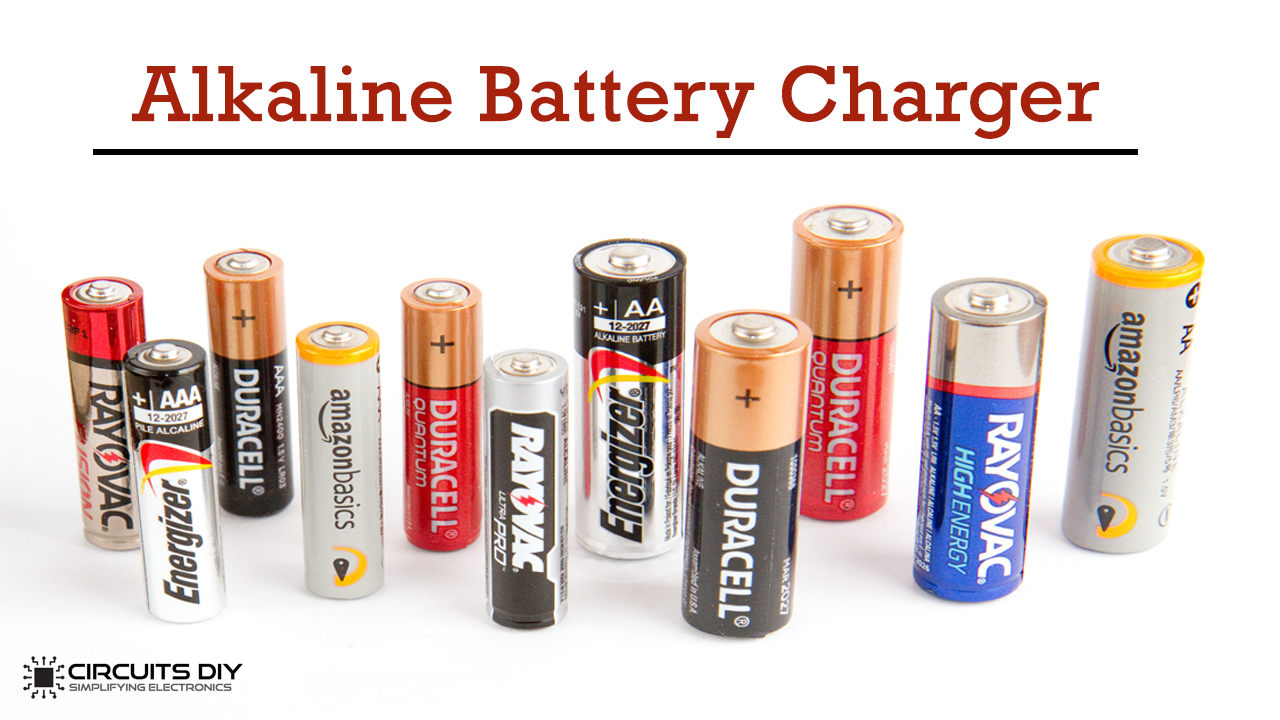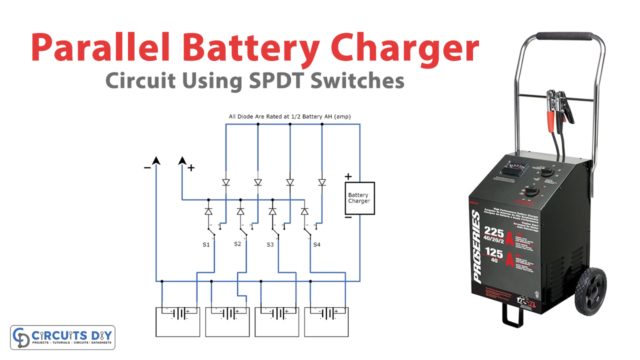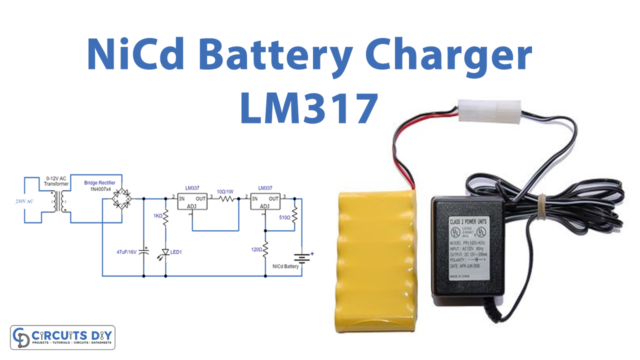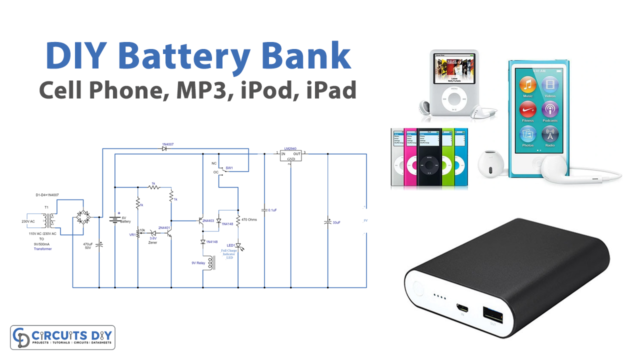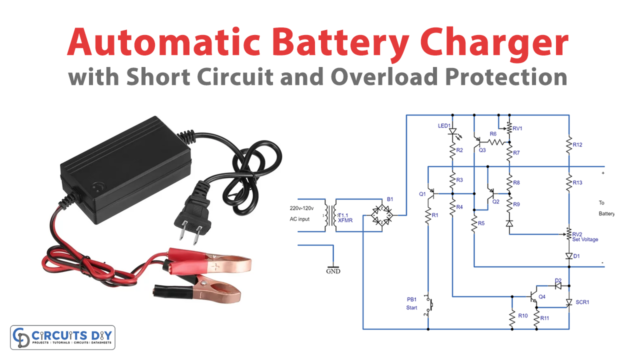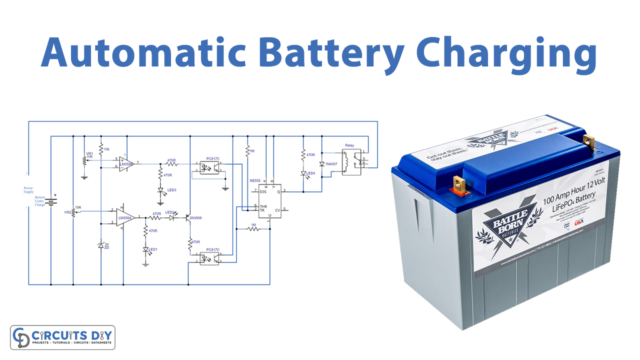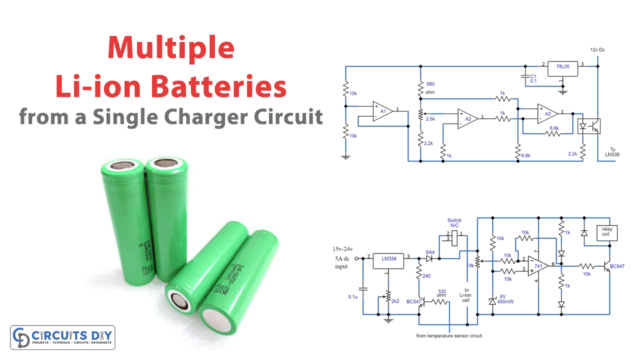The rechargeable alkaline batteries are also known as rechargeable alkaline manganese (RAM). It is a sort of basic alkaline battery that is equipped for reviving for rehashed use. This circuit is explicitly intended to recharge alkaline cells. Also, you can undoubtedly charge those batteries that you would normally discard.
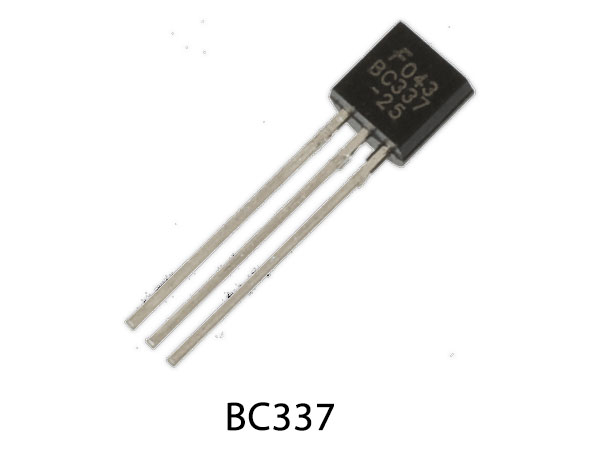
Hardware Components
The following components are required to make Alkaline Battery Charger Circuit
| S.no | Components | Value | Qty |
|---|---|---|---|
| 1. | Step down Transformer | 2.5VA | 1 |
| 2. | Diodes | 1N4007 | 6 |
| 3. | Zener diodes | 6.8V 1W, 6.8V 1/2W | 2, 1 |
| 4. | Battery | 9v | 1 |
| 5. | Transistor | BC337 | 2 |
| 6. | LED | – | 2 |
| 7. | Cells | 1.5V | 2 |
| 8. | Electrolytic Capacitors | 4700µF 10V | 2 |
| 9. | Resistor | 47 Var, 150Ω | 2, 1 |
BC337 Pinout
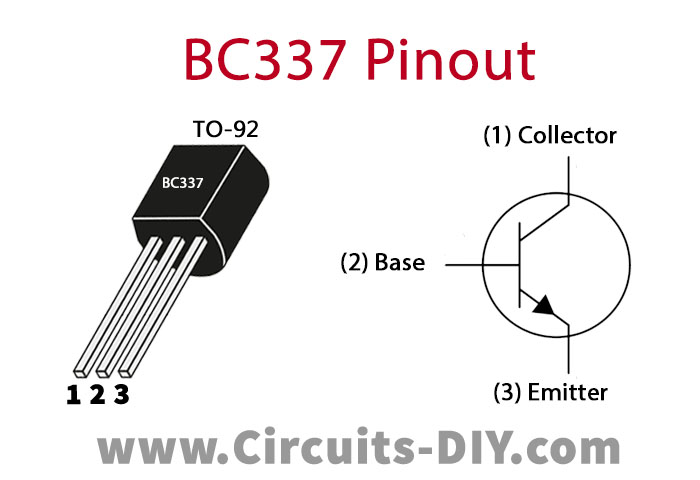
For a detailed description of pinout, dimension features, and specifications download the datasheet of BC337
Alkaline Battery Charger Circuit
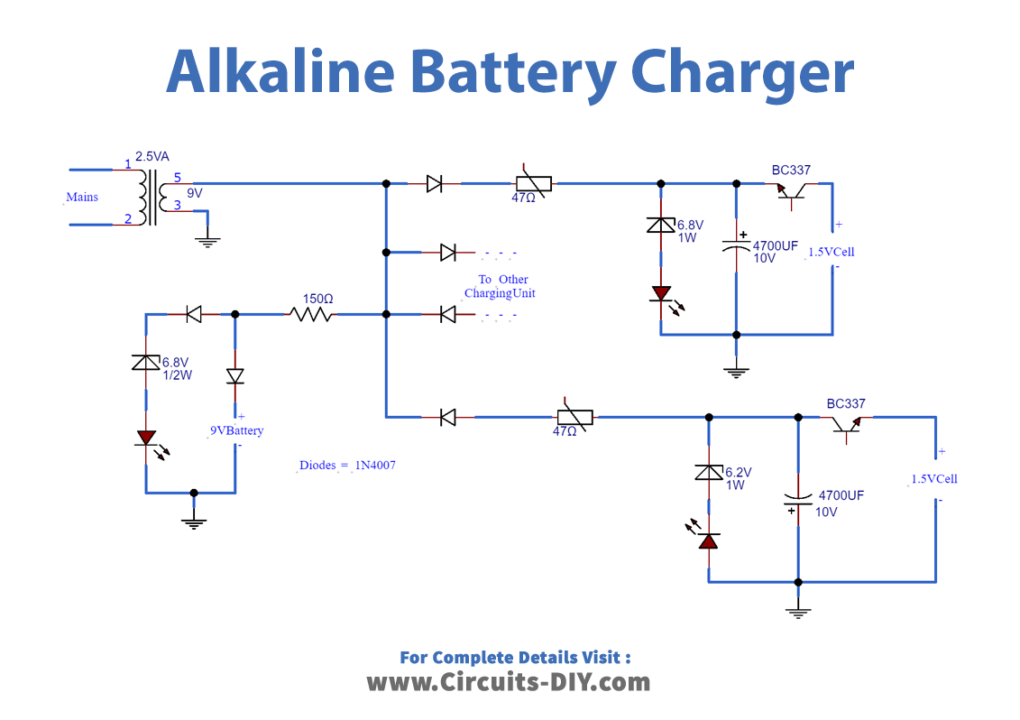
Working Explanation
A 2.5VA transformer normally recharges 4 cells simultaneously. Although, just 2 cells appear in the circuit diagram. So as to limit impedance from one circuit to the next, they don’t share anything for all intents and purposes, with the exception of the transformer. And, so as to demonstrate a decent and balanced load to the transformer, half of the charging units will utilize the positive sinewave and the other a large portion of the negative sinewave. Make sure to utilize high beta transistors. For example, BC337-25 or better BC337-40. Given the scattering of the transistor parameters, it may happen that oscillations don’t occur. Utilize a marginally higher Zener voltage; 7.5V rather than 6.8 or green LED instead of the orange ones. The voltage estimated at the transformer output ought to be 9.5Vac for legitimate operation.
The uncommon connections of the transistor in each charging unit will make it oscillate, ON and OFF. Accordingly discharging the charge accumulating in the capacitor to the cell. The orange LED will flicker around 5 times each second for a 1.37V cell. For a completely discharged cell, the LED blinking is faster yet it will diminish until the cell is charged. You may leave the cell in the charger as it will stream charge and keep it at around 1.6V. To set the right voltage you need to interface a new, unused cell and alter the trimmer until oscillations sets in.
Final Touch
At that point no wavering is available and the circuit is prepared to work. You should utilize just the predetermined transistors, LED colors, Zener voltage, and power rating since they will set the last voltage over the cell. A straightforward 9V charging circuit was additionally included: it will energize to around 9.3V and afterward keep it on a stream charge: the green LED will be off while charging and will be completely bright or ON when the battery is near its final voltage.
Applications and Uses
- It can easily revive those batteries you would normally discard.
- All kinds of alkaline cells can recharge: it will take 1 day for a completely discharged AA cell or 9V battery and as long as several days for an enormous D-type cell.
Note
- The best recharge is accomplished when the battery is as yet 70% charged. The more the battery is left to discharge the less effectively it will be revived.
- Do not leave them in the charger everlastingly, because overcharging reduces the battery life.


